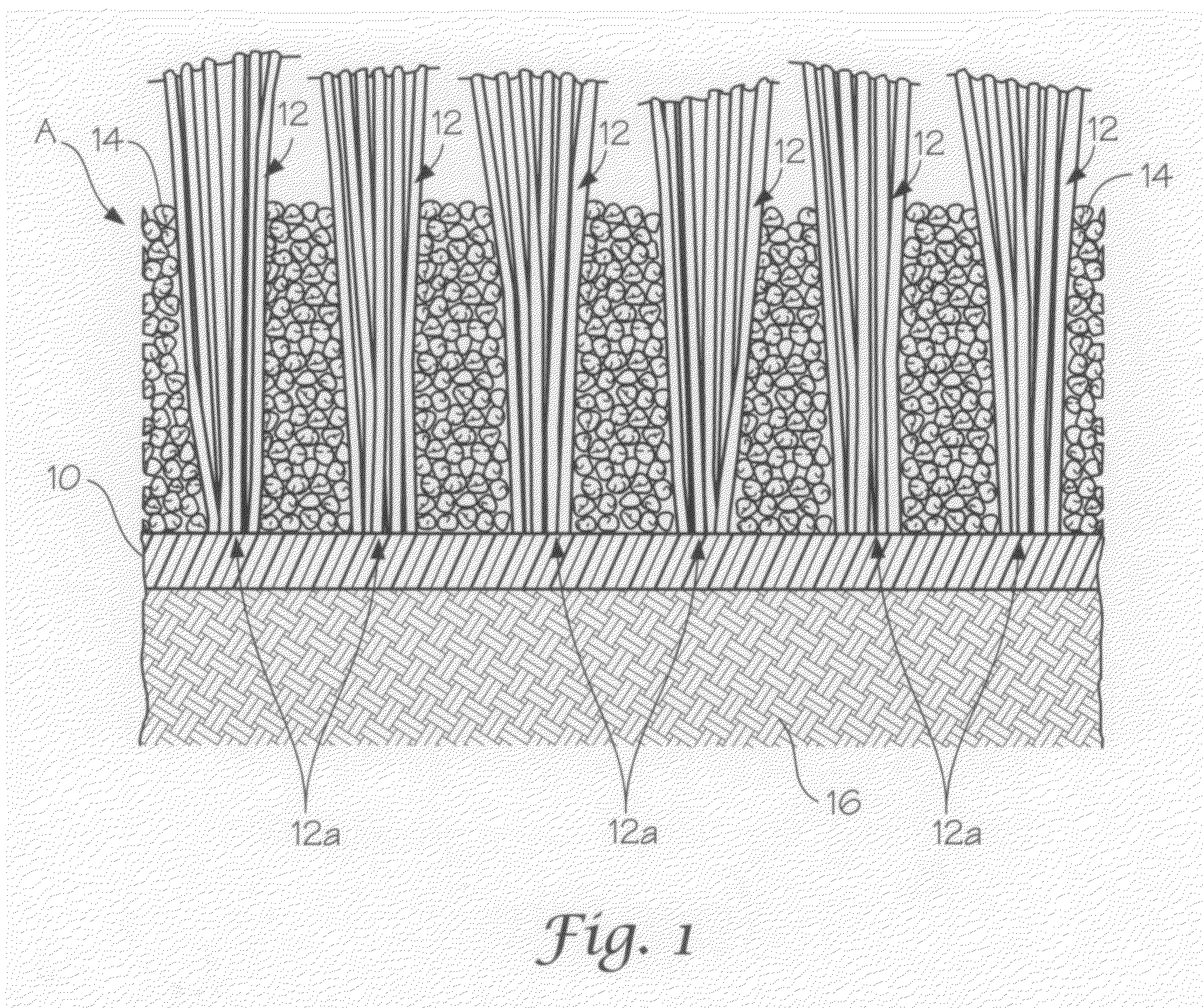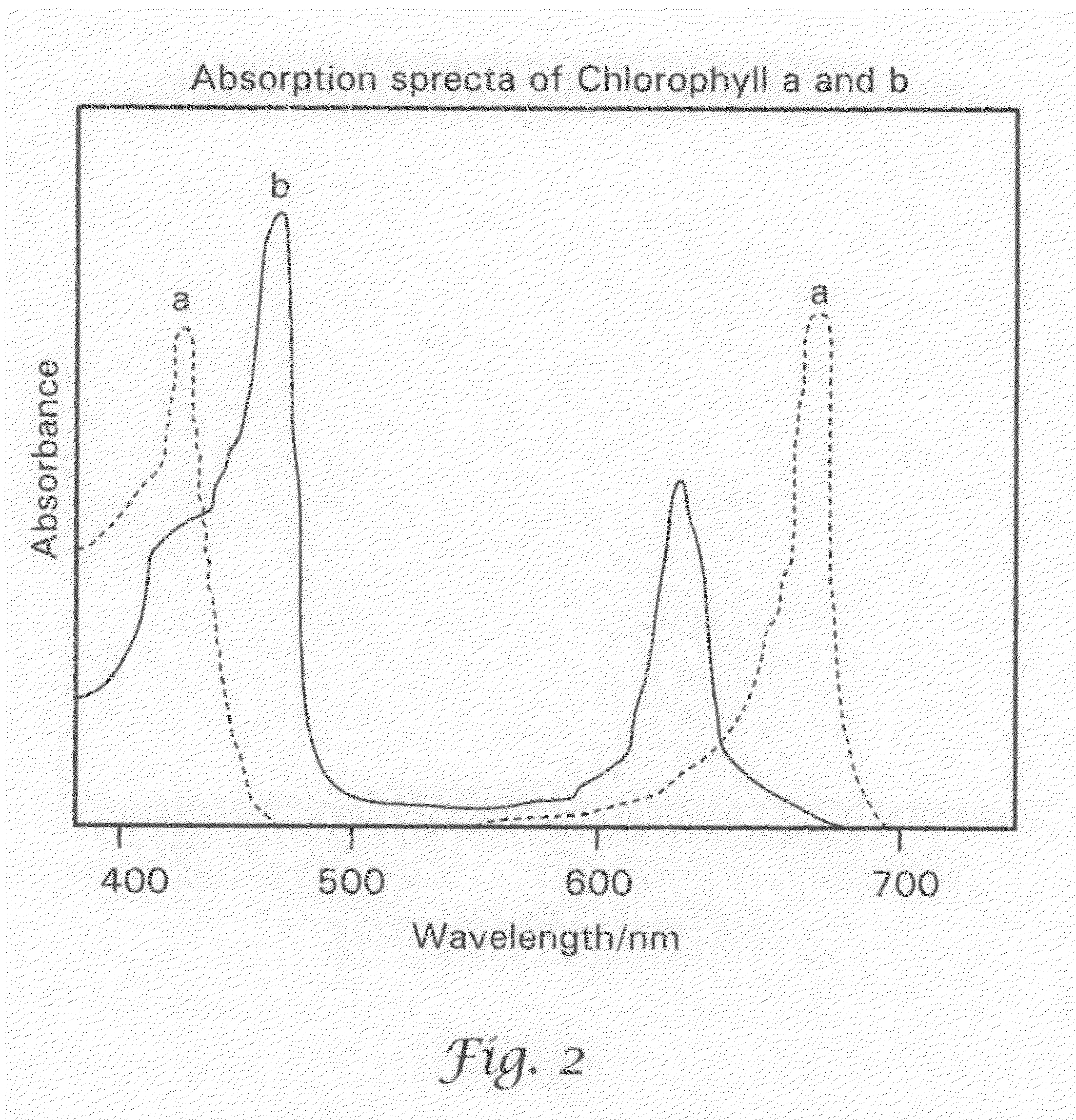Chlorophyll cooling agent for synthetic turf components
a technology of synthetic turf and cooling agent, which is applied in the field of synthetic turf improvement, can solve the problems of inability to meet the needs of sports participants, inability to absorb infrared solar radiation, and the tendency of artificial turf to retain heat, so as to reduce the heat of artificial turf and enhance the appearance of the field
- Summary
- Abstract
- Description
- Claims
- Application Information
AI Technical Summary
Benefits of technology
Problems solved by technology
Method used
Image
Examples
Embodiment Construction
[0017]Without limiting the scope of the invention, the preferred embodiments and features are hereinafter set forth. All of the United States patents, published applications and unpublished pending applications, which are cited in the specification, are hereby incorporated by reference. Unless otherwise indicated, conditions are 25° C., 1 atmosphere of pressure and 50% relative humidity, concentrations are by weight, and molecular weight is based on weight average molecular weight. The terms “polymer” or “polymeric” as used in the present application denotes a material having a weight average molecular weight (Mw) of at least 5,000. Such polymeric materials can be amorphous, crystalline, semi-crystalline or elastomeric polymeric materials.
[0018]Artificial turf is constructed with a base and a plurality of synthetic fibers attached to and extending upward from the base. By way of example, the base may be a polyurethane or rubber backing, and the fibers may be tufted into the backing....
PUM
| Property | Measurement | Unit |
|---|---|---|
| temperatures | aaaaa | aaaaa |
| temperature | aaaaa | aaaaa |
| pressure | aaaaa | aaaaa |
Abstract
Description
Claims
Application Information
 Login to View More
Login to View More - R&D
- Intellectual Property
- Life Sciences
- Materials
- Tech Scout
- Unparalleled Data Quality
- Higher Quality Content
- 60% Fewer Hallucinations
Browse by: Latest US Patents, China's latest patents, Technical Efficacy Thesaurus, Application Domain, Technology Topic, Popular Technical Reports.
© 2025 PatSnap. All rights reserved.Legal|Privacy policy|Modern Slavery Act Transparency Statement|Sitemap|About US| Contact US: help@patsnap.com



